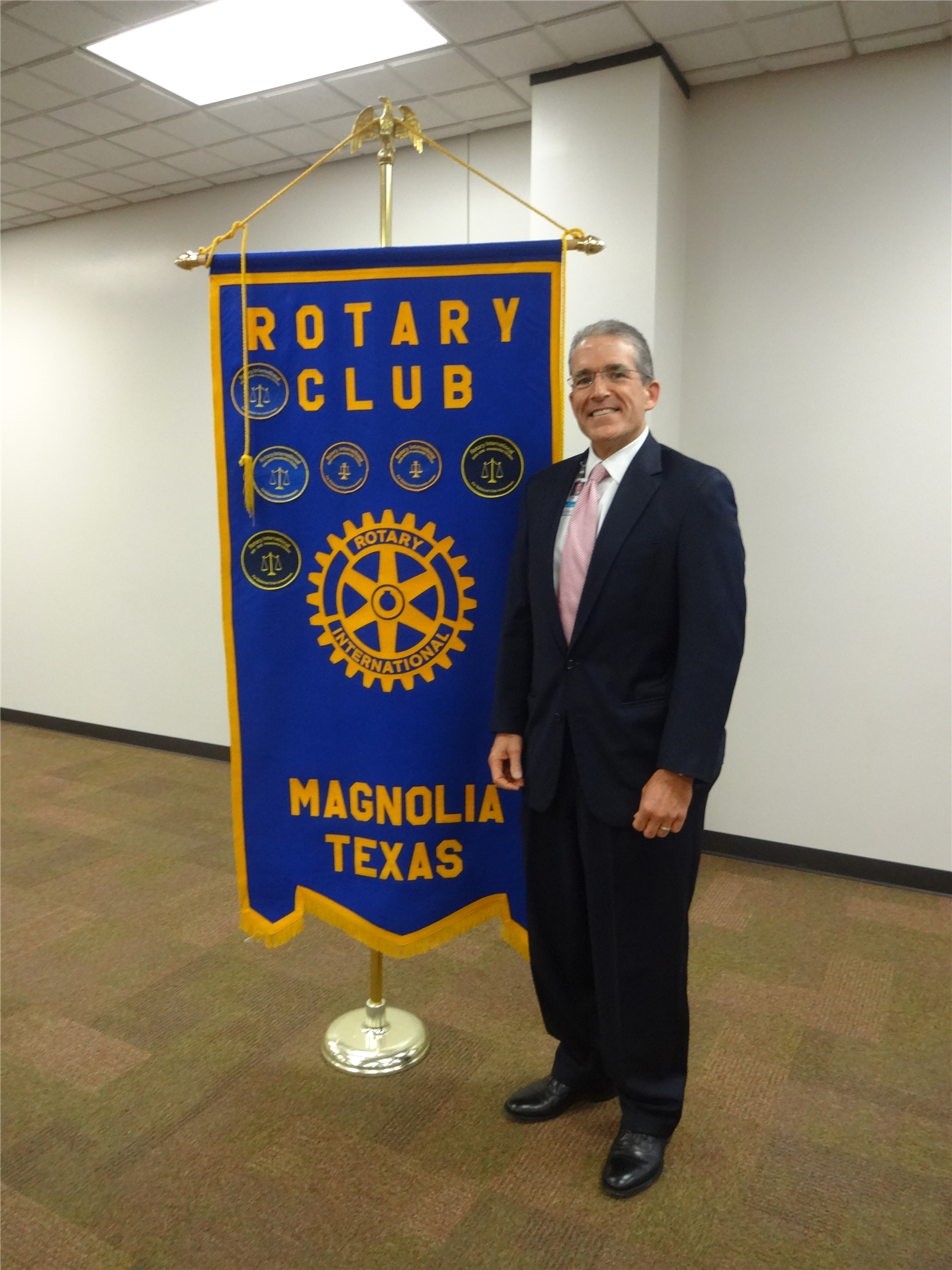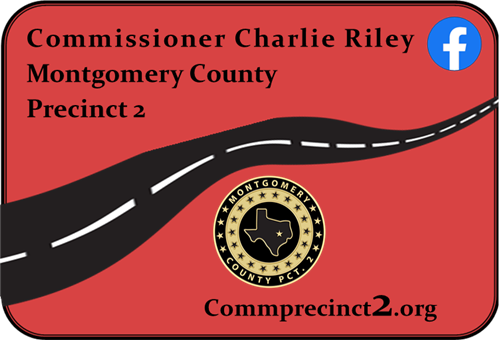Tomball Regional Hospital System
Posted by Carl Gerhardt on Sep 20, 2016

On September 20, 2016, Tomball Regional Medical Center (TRMC) CEO Tom Jackson, spoke to the Magnolia Rotary Club membership about the current TRMC organization and the "Free Standing ER" located in Magnolia at 18230 FM 1488 (Landmark Bldg.) Magnolia, TX 77354. Pictured above is TRMC CEO Tom Jackson.
Tom Jackson started by telling everyone that he grew up in Arkansas where his father was a small town doctor. Thereby, he became very familiar with the health care system and doctors and nurses but was always drawn more to the running of a health care organization more than actually becoming a doctor. As a result, he majored in Business accounting and computer science and graduated from the University of Arkansas. Because of job opportunities, he moved his family (wife and 3 daughters) from Arkansas to Houston, Texas. He worked in the Houston, Texas health care business from 1981 to 1997 before moving to College Station, Texas to head up a local hospital. In 2011, the Tomball Regional Hospital tried to get him to come work for them but he did not want to move his family and disrupt his daughter's academic efforts. However, in February of 2014, he finally decided to take an offer from TRMC to become their CEO and run their hospital system which Tom calls an "Upper Tertiary Hospital".
After taking over the hospital, he worked to improve relations with patients. One of the first things he did was to put up many photos of doctors and other hospital personnel including a plaque in front of every unit of the hospital giving the name and photograph of the person over that unit.
The second thing he did was to improve the overall wait times that patients have after entering the hospital. Before he arrived, the LWOT (Left With Out Treatment) rate was 3.4% for over 30K patients. These patients simply left because the wait was too long. In March of 2016, he had reduced the LWOT number to .06% while at the same time improving the customer satisfaction rates to be close to 100%. Currently, he expects that no ER patient should have to wait more than 30 minutes to be seen and has a target of 15 minutes for that initial wait time. His ER doctors say they can diagnose almost every patient in one hour or less. Counting on site treatment, he expects every patient to be out of the hospital in 4 hours or less unless surgery or a hospital stay is required. As a result, TRMC's satisfaction scores have been in the upper 10% of all hospitals in the country.
Tom than told everyone that the "Free Standing ER" opened in February 2014 in Magnolia, Texas in the Landmark building is currently being run by the same staff that he has at TRMC. Tom mentioned that 3 babies have been born in the Magnolia ER. Currently, there are less than 25 patients a day being seen at this ER but that number is slowly rising and Tom believes when that number is above 25 patients a day, the Magnolia ER will become self sufficient have have its own full time employees and doctors.
One of the other concepts that Tom has implemented at TRMC is "Enhanced Recovery After Surgery" or ERAS. Basically, over the last 20 years, the preoperative care has improved significantly due to the better understanding of pathophysiological mechanisms underlying stress response to surgery where early mobilization and oral feeding resulted in better outcomes. Although initially the main goal of the so called fast-track surgery was to shorten the length of stay, the most recent concept is more complex—it aims to attenuate stress response and decrease the negative influence of insulin resistance in postoperative period. This in turn results in rapid functional recovery which, according to many, is considered the most important target of the modern preoperative care. The novel Enhanced Recovery After Surgery (ERAS) philosophy uses multi-modal interventions such as the following: preoperative counselling, no mechanical bowel preparation, shortening preoperative fasting, balanced fluid therapy, use of laparoscopy and short-acting anesthetic agents, appropriate pain control and early oral feeding and mobilization. In contrast to traditional care, ERAS involves multidisciplinary teams of surgeons, anesthetists, nurses, dietitians, and physiotherapists. In addition to this, TRMC has also added robotic surgery and dynamic monitoring. The result of all of this is that now, all elective surgeries are scheduled on Monday, Tuesday, or Wednesday with the belief that most of these patients can be sent home by the end of the day on Friday. TRMC's statistics on this say that 97% of all these patients do go home by Friday. Tom also indicated that TRMC has now completed 1,000 robotic surgeries.
The other thing that Tom told everyone is that TRMC tries to be involved in their local community and in fact, they have been sponsors in 2015 and 2016 for the Magnolia Bowl event. They also give to TOMGWA and many other groups in their local communities.
Tom than gave everyone the following three questions and answers before opening the meeting up to general questions:
1. What is TRMC's biggest issue? The answer is reimbursement from medicare, medicaid, and other insurance companies including Obamacare.
2. What is TRMC's greatest accomplishment? The answer is the implementation of ERAS and the fact that many doctors now fully embrace the concept.
3. What is TRMC's biggest opportunity? The answer is working closer with local communities.
Interested in being a sponsor?
Download the website sponsorship guide
Download the website sponsorship guide





